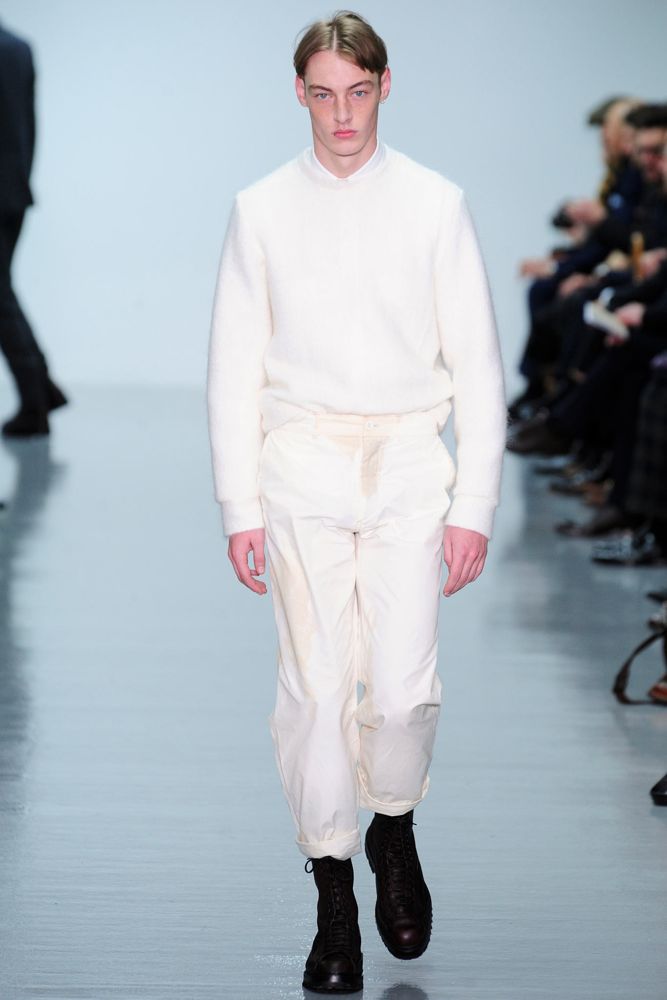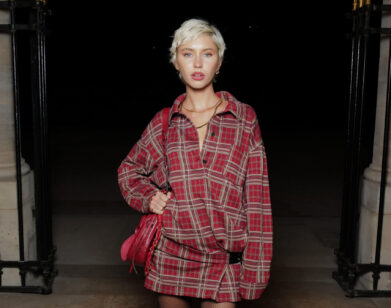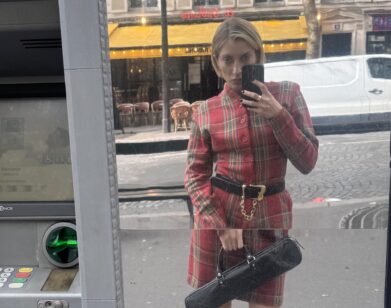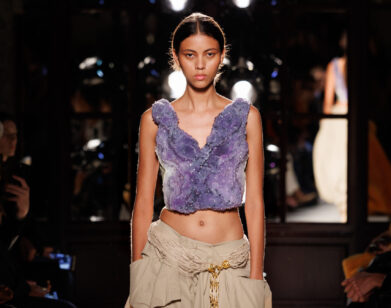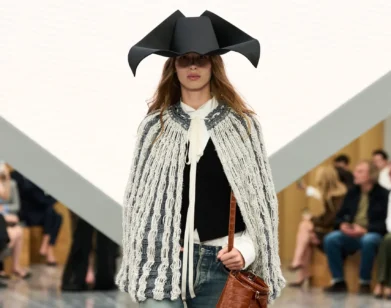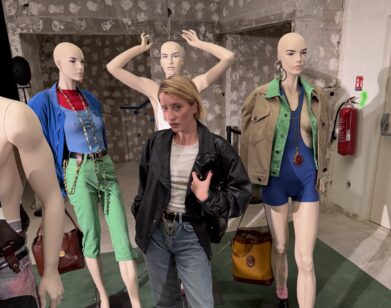Menswear Monday: Lou Dalton
There’s more to menswear than suits and ties. Every other Monday, we’re giving the fastest developing facet of fashion the attention it deserves and introducing the designers, buyers, trendsetters, and stylists you need to know.
Lou Dalton is something of a hometown hero. Having grown up in Hodnet, Shropshire, a small village in the hilly, pastoral middle of England, she left school to apprentice as a pattern cutter to a tailor at 16, and at 19, left her family home to enroll in a degree program a few towns over. “I was extremely hungry,” she remembers, “because I felt like I had a chance to excel and I really wanted to go for it.” Roughly 20 years later, she’s found herself at the center of London’s roaring menswear market. Her success is as much a product of her own design ingenuity as it is of the small-town upbringing she left behind to hone it. Season after season, her collections have come laced with poetic narratives around home and displacement. A close-knit Scottish community colonized by American oil execs, a cast of seasonal farm workers, a class of army recruits training in the countryside before being deployed abroad: all these characters have featured in her most recent collections, and the clothes they’ve inspired have been simple, subtle, and poignant.
Dalton is determined not to be pigeonholed, though. For her show this summer, she tells us she’s going international with her inspiration—right around the same time, she feels, that she and many of her peers in London are graduating from local up-and-comers to established brands with a global following and an interest in longevity. The quietness of Dalton’s designs certainly sets them apart them from the outlandish, on-trend craziness that the city’s new talent can peddle in so expertly. Her eye for simplicity should give her the staying power that she’s after.
DESIGNER: Lou Dalton
BASED IN: London
FIRST CUTS: When I was at junior school, we had a project which was a kind of arts-based. I was with a couple of other girls at my table and we decided that we wanted it to be fashion-led, so I had this grand idea that I’d make this amazing skirt. I had no understanding that you needed to put a dart or something into the skirt to create shape, so I couldn’t really take in what my friend’s mother was trying to explain to me and just thought I knew everything. [laughs] It was kind of a disaster. And then I also remember trying to make a skirt out of a pair of culottes by just cutting it in half. [laughs] It was quite tragic. But quite fun at the time.
NARRATIVE THREAD: Of course, things that happen in your life form who you are. They’re the backbone of you and what you do. So I think as a writer or an artist you pull on those things, not necessarily to relate back to them or to make them the focus of your inspiration, but because it helps you air certain things that you’ve not been the most comfortable with in your life and can turn something that at one point felt quite negative into a really great positive. I do like a narrative. I like folks to be able to relate to the boys that I send out in the collection. The idea that I have that I have for the forthcoming collection, it has a working class element, but it’s sophisticated—I like my clothes to feel sophisticated. I don’t want you as a consumer to have to wear my narrative. I want it to translate to something international.
NEWS KIDS ON THE BLOCK: London Collections: Men has had such a great response and there’s been a huge surge of interest within menswear—a lot more so than womenswear for a while, actually, which is interesting. There’s this need to have something new coming through, but I think it’s important to try and support those who are trying to make way now and who have been around for a little while, because this all just happened overnight. Right now there’s a new trend every season and as a young designer and a young brand, you want to be able to engage with that and to get that market to buy into you, but equally I’ve noticed (and it’s been the general thought, really) that it’s taken stores a while to gain confidence in myself, in Chris Shannon, in Chris Raeburn—a lot of us designers who have just come up through the London scene. It’s taken them a long time to put their money behind us, and so it still feels very new. Some designers may not have the backbone, and I can only speak for myself, but I’m bloody well determined to ensure that we’re around in a few years from now. It takes a great deal to do that. So in terms of trends, they’re always going to be pushing and striving for the new. We have the most amazing art colleges here, and globally we have kids wanting to go straight out of institutes and into doing their own thing. And it’s great to encourage that, but I do think it’s important that these kids get an understanding of working in a fashion environment, because it takes a lot of backbone and it isn’t easy. I think less is more sometimes. I’m all for moving forward, but support those around you who are trying to do well, and when new folks start coming through, engage with that and keep helping them, too.
FORM FACTOR: I think the form and the shape that menswear is in a position and has the ability to deliver—I mean, if you take, on the heritage side, something like Savile Row, that’s unique. Those are the foundations of the male form in clothing. When you have someone who may not be of model size being dressed in a fantastic way, it’s exquisite. I think that’s the beauty of something as elegant as bespoke. Yes, of course, there is that certain consumer who likes the more outrageous form of attire, but there are those boys, and there is that money, where—I’m sure if you were to approach Comme des Garçons and Dover Street Market and ask, “Can you identify who is your best customer?”—he’s probably a guy who’s an architect or somebody who has an amazing income who’s a very quiet-looking soul. That’s what I like about menswear. It can say a lot with very little.
FRIENDLY COMPETITION: We’re close as a community. We all respect one another and what each of us is doing. And we’re all doing things that are so vastly different. I think it’s really fair to say that I admire my peers and I admire what they’re doing, and there is room for us all, but equally, we are looking out for ourselves. But it’s about respect, and respecting what each of us have actually achieved in this short space of time. I think that all of us have these strong ideas, one designer to another, about who we believe in and who we don’t believe in, and who are charlatans and who are not. People like Chris Raeburn and Chris Shannon are not charlatans. They work bloody hard. And they’re two on a list of people I could tell you. The industry is tight and the industry is tough. The opportunities like sponsorships and support by fashion houses are few and far between, so of course you do play your cards to your chest very tightly. But it’s great to receive a text from another designer on the day of your show or after they’ve seen your show saying, “Well done, Lou.” And there are sponsorship deals out there that myself, Chris and Chris would all be going for them as well, but if they get them, hats off to them, because they’ve worked hard. And I respect them for that.
Menswear Monday runs every other Monday. For more, click here.

